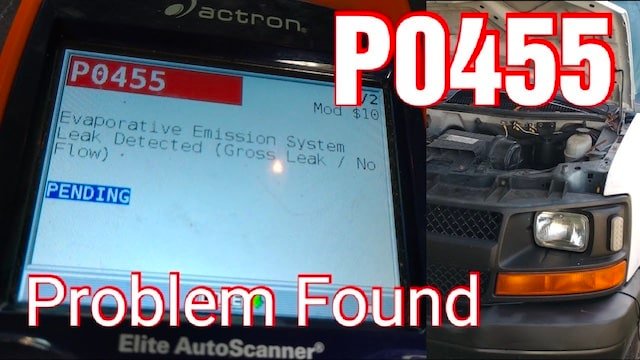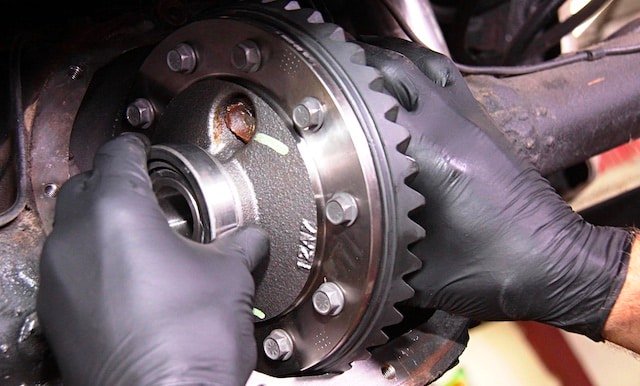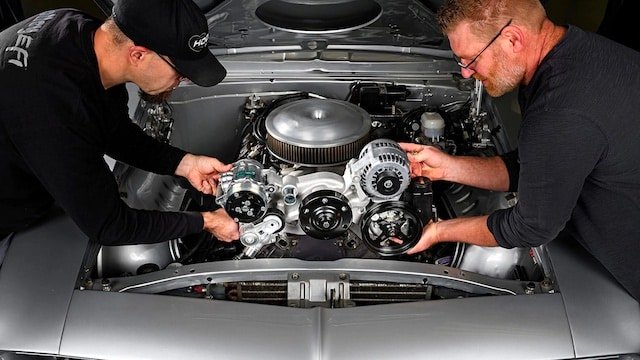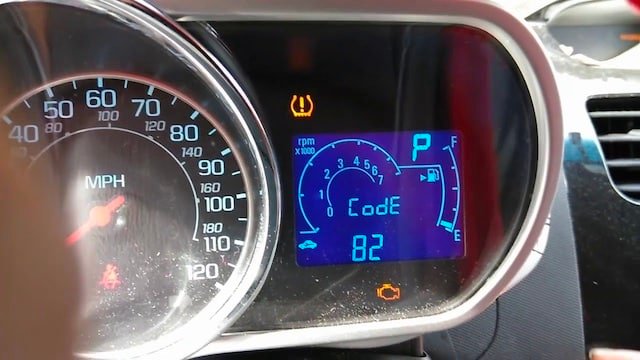Chevy Silverado Code P0300 is a high-level alert that requires complex diagnosis and repair procedures. Unlike non-critical codes like the 802, a P0300 will (most likely) require the assistance of an auto expert.
Here is a breakdown of what a code P0300 means, its common causes, and ways to fix it.

Chevy Silverado Code P0300: What Does It Mean?
Code P0300 generally signifies “Random or Multiple Cylinder Misfire detected”. When this diagnostic trouble code pops up on your Chevy, it means two or more cylinders are misfiring.
Most engines have 4, 6, or 8 cylinders which are numerically numbered. Often, an OBD-II code from P0301 to P0308 (if it is a V8 engine) appears alongside the original P0300 as an indicator of the exact cylinder misfiring.
In other words, if the accompanying code is a P0302 or P0304, the affected cylinder is likely the 2nd or 4th one. For most Chevrolet with V8 engines, the cylinders are numbered 1-3-5-7 on the driver’s side and 2-4-6-8 on the passenger section.
Four-cylinder inline engines have a 1-2-3-4 numbering system commencing from the timing belt of the engine. As a car owner, you should never ignore a code P0300 because it usually results in engine failure and spending huge bucks to fix it.
Chevy Silverado Code P0300: What are the Possible Causes?
There is no one cause for a code P0300, hence, fishing out the root of cylinder misfires can be a very technical and challenging subject. If you are not equipped with the know-how to eliminate this threat, you should consider taking your Chevy Silverado to a local repair shop.
A code P0300 may pop up on your car due to:
- Ignition-related issues such as a bad distributor or weak spark plugs
- Fuel delivery problems. A good example is having a weak fuel pump or clogged fuel injectors
- Mechanical (engine-related) problems such as a failed head gasket. A loose timing chain may also be responsible.
- Sensor malfunctions in the air flow or crankshaft section.
- Electrical or wiring problems like a loose connector or damaged wire
- Emissions device issues. A damaged exhaust gas recirculation valve or faulty secondary air injection system can lead to a P0300
- Software trouble such as lack of update or hardware malfunction
- Vacuum leaks can take the form of a cracked vacuum hose or a leaking intake manifold gasket
Chevy Silverado Code P0300: What Do You Notice in Your Car?
Since different factors might be responsible for a code P0300, it displays different symptoms too. Here are some of the most common ones:
- Your check engine light might activate itself. This is an indication that the P0300 will damage your catalytic converter (first) if not fixed immediately.
- Performance issues such as lagging and lack of acceleration.
- Extended cranking and hard starting are also common in some Chevy.
- Unnecessary shaking and jerking during engine stutter.
- The engine may start to consume more fuel than necessary
- Negative emissions test result
How to Fix the P0300 Code
Now that we know that P0300 is a high-level warning that must be resolved immediately, how do you fix it? Well, the best fix is to take your car to a repair shop but if you wish to take on the challenge yourself, it is achievable.
All you need to do is run a diagnosis to identify the cause of the code. We have stated some of the major causes of the P0300 code in the ” possible causes” section above. Now it is time to reveal how to address each cause:
- Before finding the cause of a P0300, you have to scan your Chevy to confirm the presence of other codes aside from P0300. If a different code is spotted, start by addressing it.
- If a loose connector or damaged wiring is responsible – tighten and connect appropriately.
- If old or worn-out spark plug wires are responsible – replace them where necessary.
- If there is an issue with the fuel system – replace the fuel pressure regulator and fuel injector.
- If none of the aforementioned is responsible, you should carry out an engine compression and leak-down test to identify other mechanical problems. They usually include a broken piston ring, burned valve, and leaking head gasket.
Note: Vehicles are designed differently. When troubleshooting and fixing a code P0300, obeying factory repair information is very essential.
How does the engine computer know which cylinder is misfiring anyway?
Method 1
For starters, the PCM (engine computer) must establish a connection with how the crankshaft-generated pulses are arranged. This piece of information is called a baseline snapshot and PCM learns to store them during deceleration or when the injectors are off.
At this point, the vehicle is moved only via momentum from the coasting because no cylinder is sending power to the engine. When the engine computer cannot detect power running from each cylinder to the engine, it cannot detect misfires.
Car technicians usually boost PCM functionalities by using scan software to make the engine computer more responsive. This usually involves replacing certain components or formatting the PCM’s memory.
The essence of the “Crankshaft Learn” snapshot adaptation is to allow the PCM to identify which cylinder is faulty or is not contributing by monitoring the slow-down sequence of the crankshaft. Comparing these patterns for each cylinder, the PCM identifies the misfiring cylinder.
Method 2
Another way the engine computer identifies misfiring cylinder(s) is by noting the number of piston travels per cycle. Each piston is expected to travel up and down four times in a cycle, each one generating enough power on one of its four strokes.
This allows the crankshaft to maintain an even speed because each cylinder is contributing its fair share. When a cylinder is not generating enough power, the crankshaft slows down a bit when it is time for the faulty cylinder to fire. In other words, the crankshaft makes only one turn instead of two because it rotates at half crankshaft speed.
Once this occurs, the PCM uses its position sensor to identify which cylinder is making fewer turns or should be firing when the crankshaft relaxes. To identify the level severity, the engine computer tracks every misfire to two different rpm windows – 200 and 1000 rpm windows of time.
A misfire that occurs multiple times with a 200 rpm window is often regarded as the most severe. Occasional misfires within the 1000 rpm window rarely set up a P030x code unless it occurs more than it should. This type of misfire is not tied to a particular cylinder and usually displays the P0300 code.
Any misfire condition that cannot be traced to a particular cylinder may be due to fuel contamination (primarily).
Wrap-up
Cylinder misfire, isolated sequence or not, is more or less a common issue in cars like Chevrolet, Nissan, Ford, Toyota, and Dodge. When a code P0300 and its accompanying code show up on your Chevy Silverado, you can either take your car to a repair workshop or utilize the knowledge we shared with you in this guide.
Whichever way it is, do NOT drive with an active P0300 to avoid bad fuel economy and engine damage. To repair a damaged engine is no joke, which is why we are stressing prevention. Once you see a P0300, stop the car and call an expert.







